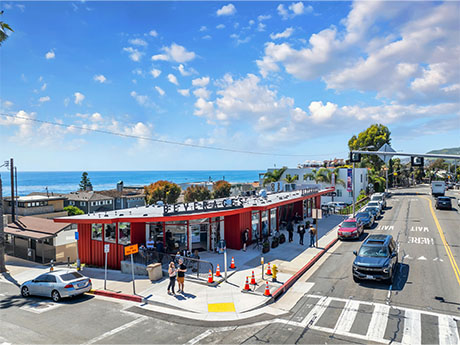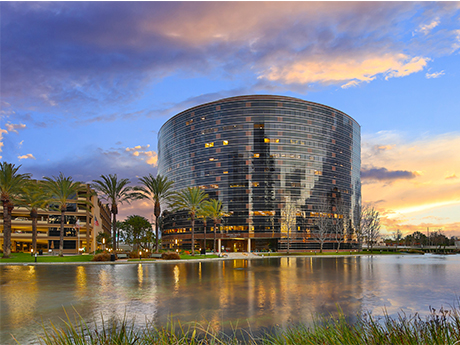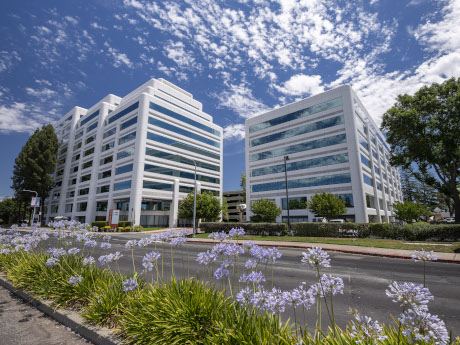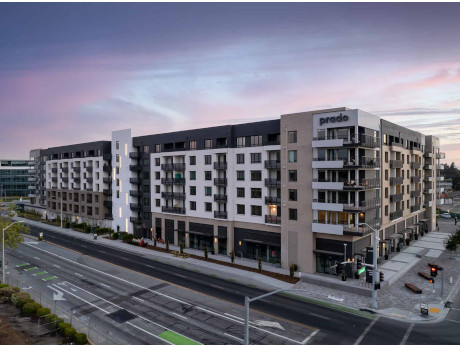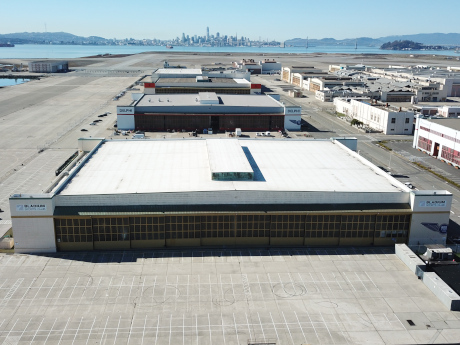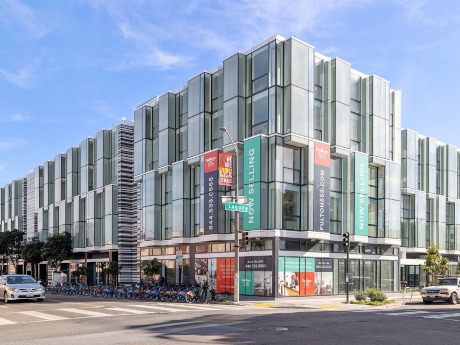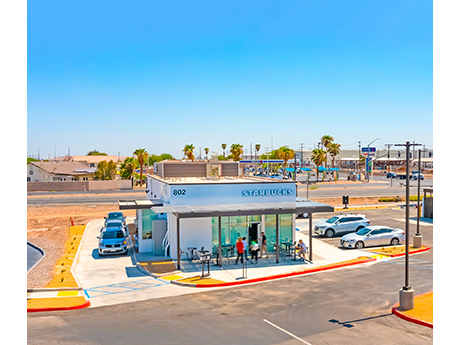— By John Read of CBRE Retail Investment Properties-West — The expression “in the black” signifies financial health, a positive outlook, investment opportunities and growth. It’s a phrase that’s resonating strongly with investors, as Orange County’s thriving retail fundamentals spur robust demand for investment properties. Despite ongoing capital market volatility and fluctuating interest rates, Orange County remains a prime target for retail property investors. The county’s strong retail property fundamentals is driven by its diverse, affluent and highly educated population. The average household income in Orange County exceeds $157,000, with more than 46 percent of residents holding a bachelor’s degree or higher. It also boasts a low unemployment rate of 3.8 percent. Retail property fundamentals concluded the fourth quarter of 2024 with a county-wide availability rate of 3.8 percent, down from the previous quarter. This reduction was fueled by sustained demand, limited inventory, minimal future supply, 547,000 square feet of positive net absorption and an average asking rent of $2.57 per square foot, a $0.13 increase from the prior year. These positive trends, combined with limited new retail property construction (only 190,000 square feet of supply, representing 0.1 percent of existing inventory and the lowest share among the nation’s 40 …
Market Reports
Orange County Boasts Best Industrial Rental Rates in South California, Despite Rising Vacancy
by John Nelson
— By Nick Krakower and James deRegt of SRS Real Estate Partners — The fourth quarter of 2024 revealed significant trends across key indicators in Orange County’s industrial market. For starters, the county’s industrial market vacancy rate was 3.9 percent at that time. This figure represents a continued trend of gradually increasing vacancies, which has consistently occurred over the past eight quarters. The uptick in vacancies can be attributed to increased availability in larger distribution centers and evolving tenant requirements. North County had the largest increase at 4.5 percent. While a 3.9 percent vacancy shows OC’s industrial market remains relatively tight, there is a countywide availability of more than 16 million square feet. Net absorption for the quarter came in at -900,000 square feet. Sectors that rely heavily on logistics and distribution were most impacted, as the move to less expensive space in the Inland Empire continues. Despite the negative figure, leasing activity remains high with quarterly averages of more than 2 million square feet. Net absorption is expected to stabilize with the development pipeline slowing down. Development activity remained strong with 2 million square feet of new industrial space in the pipeline. This new inventory focuses on state-of-the-art facilities designed to …
— By Sebastian Bernt and Erick Parulan of Avison Young — The Orange County office market continues to show resilience, particularly compared to urban centers like Downtown Los Angeles. Its suburban environment, coupled with higher office utilization rates, has made it an attractive option for businesses adapting to evolving workplace strategies. As a result, leasing activity has remained steady with availability stabilizing and tenant demand holding firm. Total leasing volume reached 1.6 million square feet in the fourth quarter of 2024, bringing the annual total to 7.8 million square feet. Notable transactions included Willow Laboratories, which signed a 63,440-square-foot lease at 121 Theory Drive in Irvine, and Acrisure, which secured 59,409 square feet at 611 Anton Blvd in Costa Mesa. While leasing slowed slightly in the fourth quarter, demand for modern, amenity-rich office spaces remained strong as companies continued implementing return-to-office strategies. This demand has pushed average asking lease rates to $35.05 per square foot, reflecting a broader shift toward high-quality, collaborative work environments that prioritize employee engagement and workplace experience. Orange County’s growing residential appeal has further fueled office demand as young professionals and families increasingly opt for a suburban lifestyle. As a result, companies are prioritizing locations with …
A notable shift in the way we live, work and play has occurred since the pandemic — one that emphasizes efficiency, multi-functionality and convenience. The result has been an increase in the demand and popularity of mixed-use developments. Developers love them for their efficiency. Investors love them for their diversity. And consumers love them for their ability to achieve said live-work-play trifecta all under one roof. Within Orange County, South Coast Metro stands out as an area that fosters this type of urban development, blending retail, multifamily, office and cultural assets in a way that fosters economic growth and community engagement. Adjacent to John Wayne Airport, this 2,500-acre district shows how strategic development can create a self-sustaining urban environment. A Retail Powerhouse with Expanding Opportunities South Coast Metro is arguably most known for being the home of South Coast Plaza. The West Coast’s largest luxury shopping destination saw record annual sales exceeding $2.3 billion in 2023. While luxury retail remains a major draw, the broader South Coast Metro caters to a diverse range of shopping experiences, which includes the boutique-driven OC Mix and SoBECA District, as well as major national retailers. This variety underscores a key trend in commercial real estate: …
— By Colin Yasukochi, executive director, Tech Insights Center, CBRE — An increasing supply of distressed properties for sale has been met with enthusiasm by a growing number of opportunistic buyers in San Francisco. Prices up to 70 percent lower than the seller’s cost basis, combined with improving fundamentals, has given investors confidence to make property purchases ahead of substantial leasing market recovery. About $1 billion of office sales volume could be reached by year-end 2024. There are 27 properties totaling 3.6 million square feet that have sold (totaling $338 million), are under contract (totaling $193 million) or being marketed ($453 million). If this occurs, it would be the highest number of properties sold since 2019 and the highest square footage and dollar volume since 2021. The years 2022 and 2023 combined had a total sales volume of $945 million. Stabilization in the office leasing market has emerged with vacancy and rents little changed and much higher space demand. Second-quarter 2024 vacancy ticked up to 36.8 percent (+0.1 percent), while average asking rents ticked down to $68.43 (-$0.12) compared to the previous quarter. Demand indicators strengthened with leasing activity and tenants in the market rising in the second quarter of …
— By Dustin Dolby, executive vice president, Colliers — During the second quarter of 2024, the San Francisco multifamily market endured high interest rates and delayed cuts. Between June and December of 2023, expectations of the Federal Reserve cutting rates spurred an increase in transactional activity following an apparent lull in the first quarter of 2023 as interest rates remained elevated. This two-peat of complacent transactions can be attributed to the looming decision concerning interest rate trajectories and its projections. Upon reaching the second quarter of 2024, we have yet to see any such cuts applied. This — along with the Federal Reserve’s consistent reluctance to cut — has resulted in a plateau of transactional volume within the San Francisco multifamily market. Development within the San Francisco submarket has faced similar stagnation. However, this can be attributed to a lengthy “shot clock” that new developments face regarding the city approval process. Because of this, projects that focus on a large percentage of affordable units have been streamlined and comprise the bulk of new developments in the market. If the Federal Reserve lowers interest rates by the end of the third or fourth quarter of this year — as anticipated in its …
— By Rachel Ivers, senior analyst, multifamily investment sales team, and Bryan Danforth and Matt Thomson, senior vice presidents, Compass Commercial — The multifamily investment sales market in the San Francisco Bay Area is undergoing a noticeable transformation that’s driven by economic pressures and evolving investor strategies. Unlike in previous years — where sellers might list properties to capitalize on market highs or interest rate lows — the current environment is seeing fewer sales motivated by profit. Many sellers today are cashing out due to expiring fixed interest rates or selling for personal reasons rather than purely financial motivations. This includes circumstances such as inheritance, divorce or retirement. With the Baby Boomer generation, currently aged 60 to 78 and reaching retirement age in larger numbers, we’re beginning to see the front end of significant changes in property ownership. This demographic shift is likely to drive a substantial increase in inheritance sales in the near future as life expectancy hovers around 77.5 years. A significant factor driving this shift is the belief among many investors that the market has peaked. Concerns about stricter rent control measures, which continue to appear on ballots, are prompting these investors to seek opportunities elsewhere. Markets …
— By David Nelson, regional president of brokerage for Northern California and Nevada, Kidder Mathews — After record figures across most U.S. industrial markets in 2021 and 2022, key fundamentals cooled in 2023 and have been recalibrating ever since. Total net absorption has been negative in recent quarters, sublease space is on the rise, vacancy and availability rates have been steadily inching up, and average asking lease rates are relatively flat. Furthermore, the recent surge in development activity due to the rise in ecommerce penetration has been slowly drying up with construction starts dropping by more than 60 percent in 2023 and 2024. Core industrial markets in the Bay Area experienced notable increases in both vacancy and availability. Silicon Valley vacancy rose from between 1.5 percent and 2.5 percent last year to 3 percent and 4 percent in 2024. Meanwhile, East Bay rose from 3.5 percent and 4 percent in 2023 to 5.5 percent and 6.5 percent in second-quarter 2024. During the first half of the year, an increase in sublease space has been a major contributor to the higher rates. They have increased from the pre-COVID average of 9 percent of total available space to 19 percent at the end …
— By Kazuko Morgan, executive vice chair; Alanna Joy Loeffler, managing director, business strategy and development, Americas retail services; and Soany Gunawan, senior research analyst, San Francisco retail research, Cushman & Wakefield — Over the past few years, the headline narrative surrounding San Francisco has focused on store closures, complex governance issues and city challenges. However, with one of the highest U.S. household incomes, a rising population count and the lowest unemployment rate in California, the city remains a beacon of opportunity, innovation and creativity. Within the urban retail market, San Francisco continues to demonstrate resilience and growth with a host of new brands, products and services arriving and thriving. Retail sales in San Francisco have continued to increase, climbing an estimated 5.7 percent year over year to $37.1 billion in the second quarter of 2024. A multitude of exciting brands and new concepts are opening, flourishing or expanding. INGKA has launched its first-ever food hall, Saluhall, a 23,000-square-foot, plant-forward culinary project connected to the IKEA store at 945 Market Street. This addition not only creates jobs but enriches the community with regular events, highlighting local food vendors while offering fun and educational cooking classes. MillerKnoll’s modern furnishings brand Design Within Reach …
— By Matt Davis — Imperial County is deeply intertwined with agriculture, experiencing significant growth in both farmable acreage and the value of its agricultural outputs. The region has had a 20 percent increase in the number of farms, a 40 percent expansion in farmed acreage and a nearly 65 percent rise in the market value of agricultural products sold over the past five years. However, agriculture is not the only growing industry in the Valley. It will also soon be recognized for its lithium extraction and geothermal energy production, as well as its role as a strategic logistics hub. As newer industry sectors continue to grow and evolve in the region, their demand for land will also increase. Fortunately, Imperial County boasts ample available land to meet these needs. Investor interest in Imperial Valley land has surged as agricultural areas — despite continued growth — are increasingly transitioning to higher and better uses in key areas of the Valley. From Farming To Energy Forward-thinking investors and developers have begun to purchase and reposition legacy agricultural land to support emerging lithium mining operations in northern Imperial County and logistics users near the Calexico-East port of entry in the south. They …


